IoT Operating Systems
An operating system is any computer’s brain and nervous systems, such as laptops, smartphones, and servers. The operating system is responsible for controlling an application’s software and hardware by assigning all resources such as processing, memory, and storage. The operating system has both open-source and commercial versions.
IoT operating systems are created to perform well within the limits of small IoT devices. If there was no OS, each application would have to have its own user interface and codebase to handle the nitty-gritty of the underlying computer. In this article, you will learn the best IoT operating systems. But before discussing the best IoT operating system, you must know about the IoT operating system.
What is IoT Operating System?
IoT operating systems enable users to perform basic computer activities on an internet-connected device. IoT OSs run on IoT devices and connects to a larger network of devices. These operating systems offer computer-like capabilities by providing memory and data storage processing capability. These systems may run and process any program that is installed on the device. Operating systems for IoT devices communicate with IoT device management software.
There are various best IoT operating systems available today. Some of the best IoT operating systems are as follows:
- TinyOS
- Contiki
- RIOT
- Ubuntu Core
- Fuchsia OS
- Windows 10 IoT
- Tizen
- Android Things
- OpenWrt
- Mbed OS
TinyOS
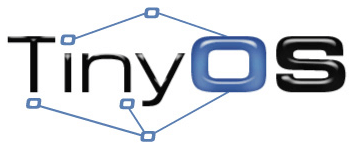
TinyOS is a component-based open-source OS. TinyOS’s fundamental language is nesC, a version of the C programming language. It is designed for wireless sensor networks. TinyOS is very popular among developers because to its memory optimization capabilities. TinyOS includes a component that neutralizes some IoT system abstractions, such as sensing, packet transmission, routing, etc. TinyOS Alliance is the developer group for this IoT Operating System.
It began as a Google Code project that a small group could only write of core developers. However, it has shifted to GitHub since 2013, where it is more available to the open-source community and receives at least 35,000 downloads per year.
Advantages and disadvantages of TinyOS
There are various advantages and disadvantages of TinyOS. Some advantages and disadvantages of TinyOS are as follows:
Advantages
- TinyOS is an event-driven operating system, which means it depends on the events it receives from its surrounding environment.
- TinyOS is an embedded operating system that runs on all devices. TinyOS requires less memory to execute. If you wish to run this OS, you don’t require buying more memory devices.
- TinyOS’ source code is relatively minimal. The code may be optimized to help run for any particular system. Devices run faster due to their reduced code, and the OS doesn’t overload the device.
- TinyOS is a portable OS that may be used on several devices. If the devices are of the same nature, the coding doesn’t need to be altered.
- TinyOS is made up of various modules. The modules have various functions, including tasks, microcontrollers, commands, hardware, events, and software. Each module performs its own function.
Disadvantages
- Some modifications are required to allow communication among hardware and software. It is due to the low voltage constraint.
- TinyOS programming is tough due to constraints such as memory limits, asynchronous behavior, and low voltage. The main downside of this operating system is the NesC programming language.
- Because network sensor devices must refresh their data from their surroundings every second, programmers must keep this in mind to ensure that the code works in all circumstances.
Contiki
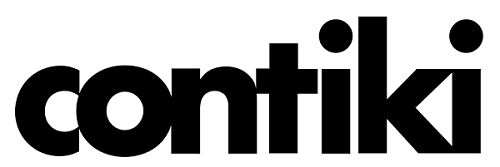
Contiki is a free and open-source operating system for connecting low-power, low-cost microcontrollers to the internet and a toolbox for creating complicated wireless systems.
Contiki is designed to adhere to the highest Internet standards, such as full support for IPv4 and IPv6. It’s written in C language to provide a rapid programming environment in a single download, and it includes an active community to make any user feel at ease.
Advantages and disadvantages of Contiki
There are various advantages and disadvantages of Contiki. Some advantages and disadvantages of Contiki are as follows:
Advantages
- It offers powerful low-power Internet communication.
- It supports completely standard IPv6 and IPv4.
- It can be used with a variety of low-power wireless devices, some of which are readily available online.
- It is free and open-source software that can be used in commercial and noncommercial systems, with the source code available.
Disadvantages
- Contiki is an event-driven operating system; therefore, no advanced scheduling algorithms are used.
- As events come, they are dispatched to the destination application.
- Contiki doesn’t facilitate the deployment of real-time applications, so no real-time process scheduling algorithms are included in this operating system.
RIOT
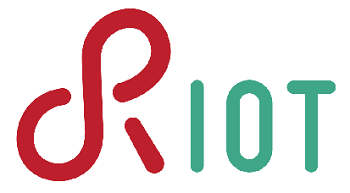
It is a free, open-source IoT OS that is backed by a supportive development community. It is designed to provide IoT services and is released under an unclonable GNU Lesser General Public License. The community, which is commonly known as the Linux of the IoT world, is made up of academics, programmers, and enthusiasts. RIOT is a low-power operating system based on microkernel architecture and the C and C++ programming languages.
It supports full multithreading and SSL/TLS libraries, including wolfSSL, and runs on 8-bit, 16-bit, and 32-bit processors. RIOT is provided with a port that enables it to execute as Linux or macOS processes and support single board computers and IoT devices. Other characteristics include partial POSIX compliance, TCP, content-centric networking, UDP, and CoAp network protocols. It provides IoT devices and microcontroller designs with security, connectivity, privacy, and durability.
RIOT is possibly the only operating system with a robust community spread over numerous platforms such as Twitter, Mastodon, Hackster.io, Discourse, YouTube, and GitHub.
Features of RIOT
There are various features of RIOT. Some features of RIOT OS are as follows:
- It supports the 8, 16, 32-bit microcontroller platforms.
- It maintains energy efficiency.
- There aren’t any new programming environments. C or C++ programming languages may be used directly with existing tools, such as gdb, gcc, etc.
- There is less hardware-dependent code.
- It allows multithreading.
- It supports the complete network stack of the Internet of Things.
- Because all output can be seen in the terminal if the hardware is not accessible, a visualization tool called RIOT-TV is supplied.
Ubuntu Core
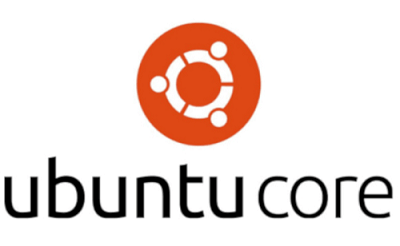
It’s a robust version of Ubuntu and Linux’s most popular distro that is specifically designed for huge container deployments and IoT devices. It was developed by Canonical to use a similar kernel, system software, and libraries as Ubuntu, but on a smaller scale. It is used to digital signs, power robots, gateways, and other devices. It may be used to create a secure embedded Linux for IoT devices.
All of its components have been verified in order to create immutable packages and durable digital signatures. It is a simple and enterprise-ready design.
Features of Ubuntu Core
There are various features of Ubuntu Core. Some features of ubuntu Core are as follows:
- It is full-disk encryption.
- It has security features such as full-disk encryption, a cryptographically authenticated boot procedure, and manual and remote recovery modes.
- Secure boot ensures and confirms the authenticity of the software loaded on your devices at each boot.
Fuchsia OS
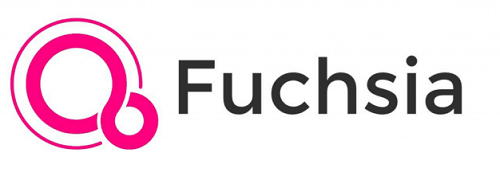
It is a real-time, open-source operating system developed by Google for IoT devices. Fuchsia is based on the Zircon kernel. It is a microkernel-based operating system that combines effective networking solutions and can run on low-power devices. Using Node.js on the OS ensures that the application will run on tablets, phones, and IoT devices. It employs a card-based design for user interfaces for multiple app management and the Flutter software development kit for user interfaces and apps.
Features of Fuchsia OS
There are various features of Fuchsia OS. Some features of Fuchsia OS are as follows:
- Google Fuchsia has been designed to satisfy the needs of a cross-platform device. Fuchsia focuses on providing the same user experience across all devices, including smartphones, wearable’s, computers, and tablets. Fuchsia developers can create applications for various platforms using a single codebase.
- According to the Google, Fuchsia operating system has a lot of potentials. It would use the camera, app drawers, and on-screen API authentication to make it more user-friendly.
- Fuchsia will aid developers in designing visually appealing user interfaces. It will ensure that your user-interface components, such as the notifications, buttons, background, arrows, and more, are good. Furthermore, you can use drag and drop tools to customize your screen. You’ll immediately consider switching to Material Design on Google operating system.
Windows 10 IoT

It is a Windows 10 family member that brings enterprise-class features, security, and manageability to the Internet of Things. It uses Windows’ embedded experience, ecosystem, and cloud connectivity to help organizations to establish their Internet of Things with secure devices that can be swiftly deployed, managed, and linked into a wider cloud strategy. It doesn’t work with Cortana or FileOpenPicker, which are included in Windows 10.
The Windows 10 IoT operating system divides into two parts:
- The first one is Windows 10 IoT Core, which is developed to support small embedded devices.
- The second is Windows 10 IoT Enterprise, which is designed to support heavy-duty industrial applications with high-grade reliability in mind.
Features of Windows 10 IoT
There are various features of Windows 10 IoT. Some features of Windows 10 IoT are as follows:
- It provides the Multilingual User Interface (MUI) for Windows professionals.
- It is supported for at least 10 years and will be available for another 5 years, which is very important for long-term applications.
- There are over 30 language packages available for Windows 10 IoT Enterprise.
Tizen
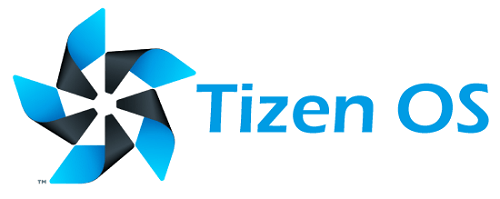
It’s an open and flexible operating system designed to meet the demands of the connected device ecosystem. It was created in 2011 and is suitable for both mobile and small embedded systems. Its kernel type is monolithic and lightweight compared to the androids operating system.
Tizen is a Linux-based free mobile and connected device OS that is available in variants for tablets, automobiles, smartphones, TVs, and wearables. The OS provides a fast and secure user interface that enables developers to create apps that run directly on top of the hardware without the need for any custom ROMs or modifications.
Tizen also offers a platform that allows app developers to create applications quickly. Tizen supports the Exynos 5410 or 5420 processor architectures and the Mali G52 or Cuda M1 GPUs. It also supports non-volatile storage and read/write capabilities for applications stored on non-volatile storage devices. The Tizen community always comprises people who collaborate on the operating system.
Features of Tizen
There are various features of Tizen. Some features of Tizen Os are as follows:
- It is an open-source and flexible OS.
- It provides an unbelievable operation speed as compared to other platforms.
- It is lighter on CPU, memory, and battery.
- Samsung has been projecting Tizen OS as a ‘universal operating system’.
- Samsung has an ally in Intel for the continuous up-gradation of the Tizen OS platform.
Android things
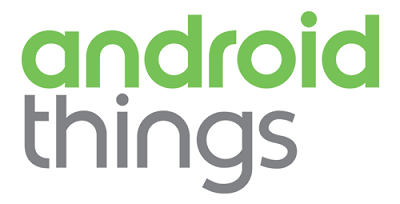
Android Things is an OS that Google develops for the IoT and embedded devices. Previously, it was named Brillo. It’s built on top of Android, which is based on the Linux kernel. It also has support for multitasking and virtual memory. It may run on very little power and also has Wi-Fi and Bluetooth capabilities. It’s designed to fit on devices with a small memory footprint, although it needs a minimum of 512 MB RAM. Therefore, Android Things is aimed at a different IoT market than the microcontroller-based IoT devices.
Android Things will make it easier for Android developers to create IoT apps. They may use Android Studio, Android SDK, Google Play Services, Firebase, and Google Cloud, which are all familiar tools and interfaces. Kotlin and RxJava are two Android libraries that may be used to build the applications. Google also certifies compatible System-on-Modules (SoMs) and makes the Board Support Package available (BSP). Android Things Console would allow managed firmware and application updates to IoT devices.
Features of Android Things
There are various features of Android Things. Some features of the Android things are as follows:
- It has the potential to become a new data collection channel. It may be able Google to comprehend user behavior better. As a result, Google will be able to provide its large user base with more tailored and context-driven ads.
- Google is responsible for providing regular security updates to Android devices rather than the developers in the current structure.
- Android Things has the potential to reduce the overall cost of developing IoT applications. It will decrease the overhead costs and increase productivity. It is due to the fact that the Android Things framework may be used as an application that runs on any hardware, and businesses may simply develop new applications on top of it.
OpenWrt

OpenWrt OS is based on the Linux kernel that is mainly used on embedded devices to route network traffic. It’s a full wireless networking solution for devices that support the 802.11n standard.
It is designed and developed by a German-based multinational community. It is the best choice for many IoT app developers since it provides a stable and trustworthy framework for building the most advanced embedded systems.
A command-line or web interface is used to configure OpenWrt (LuCI). The opkg package management system has roughly 3500 optional software packages accessible for installation. It may run on several types of devices like residential gateways, pocket computers, smartphones, and CPE routers. It may also be installed on personal PCs and laptops.
The main benefit of this OS over other platforms is that it supports conventional hardware. It provides access to a strong cross-platform application stack and a user-friendly interface. Its routers are open and flexible, allowing developers to add additional wireless and wired networking hardware components. Unlike the proprietary OS’s, it doesn’t need users to reset their computers to factory settings after scaling their networks.
Features of OpenWrt
There are various features of the OpenWrt operating system. Some features of the OpenWrt operating system are as follows:
- A writable root files system that allows users to create, delete, and change any file.
- It has an expandable setup of all hardware drivers, such as built-in network switches and their VLAN capabilities, available hardware buttons, DSL modems, FX, WNICs, etc.
- UCI (unified configuration interface) is a series of scripts designed to unify and simplify the setup of the complete system.
- There are numerous options for configuring network-related functionality.
Mbed OS

Mbed OS is a free, open-source operating system known for its use of an ARM CPU and a wide range of connectivity options, including WiFi and Bluetooth. Mbed OS’ layered security protocols are making it so enticing to developers who want to start working on IoT applications.
With the Mbed Operating system, you may write IoT software in C++ using the free online IDE, compile it with the Arm C/C++ Compiler, and run it on various hardware platforms. One advantage of Mbed OS for developers is that it maintains their code clean and portable, allowing those to create prototype IoT apps using ARM cortex M-based devices.
Features of Mbed OS
There are various features of the Mbed operating system. Some features of the Mbed operating system are as follows:
- The Mbed OS community enables ARM, more than 50 partners, and thousands of individual developers worldwide to contribute and collaborate.
- It includes driver support for a wide range of standard MCU peripherals. It includes digital and analog IO, I2C, port, bus IO, PWM, interrupts, SPI, and serial.
- You could use Mbed OS in business and personal projects with confidence because it is released under an Apache 2.0 license.
- Developers may quickly make a prototype of IoT applications on low-cost development boards with the support of the Mbed OS compatibility on a wide range of ARM Cortex-M based devices.
- The Mbed OS supports deterministic, multithreaded real-time software execution using an RTOS core based on the widely used open-source CMSIS-RTOS RTX. Because RTOS primitives are constantly available, drivers and applications can rely on features, including semaphores, threads, and mutexes.
